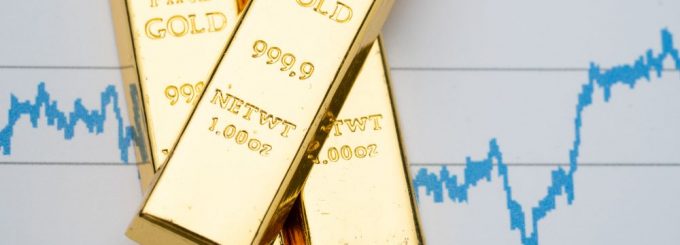How the NIRP and Stimulus Packages Affect Gold Prices

There are a number of forces at work which are causing gold prices to spike, and two of the most important to investors are NIRP (Negative Interest Rate Policy) and federal stimulus packages. Below is an in depth analysis of how this works.
Negative Interest Rate Policy
Worldwide, major financial institutions are in the process of slashing interest rates. As a consequence, investors now demand bonds which trade with decent yields. This in turn leads to higher bond prices and yields which are reduced. Historically, whenever interest rates fall, investors are discouraged from purchasing government bonds and they will look to alternative safe havens like gold and platinum.
The yields for government bonds will vary from one country to another, but the result is largely the same. Negative interest rates combined with investors who are desperate for yields will cause many bond yields to enter negative territory. In fact, over the last five years experts have concluded that the negative yields globally have increased to more than $12 trillion. Ultimately, gold stocks (and the physical metal they are derived from) could multiply in value many times over. Investors that understand this historical pattern therefore stand to make great profits.
Federal Stimulus Packages
The havoc wrought by the coronavirus has also prompted governments around the world to issue federal stimulus packages, which is basically the same as printing money. Research shows that internationally, about $9 trillion has been issued as a fiscal response to COVID-19, and the laws of economics dictate that printing this huge sum of money will support both gold and related asset classes, which are a true store of value.
What Else Can Be Expected?
Aside from negative interest rates and money printing, there is also the phenomenon called stagflation/deflation trade. Essentially, the decision of governments around the world to shut down their economies and borders in response to the virus has been disastrous, leading to greatly reduced productivity and GDP (gross domestic product) contraction. Tens of millions of jobs have been lost just in the USA alone, and because basic goods such as water and food are not being produced at the same pre-virus rate (even though demand remains the same) their prices have also risen.
However, even in the worst of economic times there will always be opportunities for those who are prepared. Investors worldwide now have an incentive to invest in classical assets which can serve as safe havens and value storage. The IMF (International Monetary Fund) has predicted a major recession, and the recovery is likely to be slow. With international financial losses resulting from the coronavirus estimated at over $10 trillion, it is in the best interests of every individual to preserve as much of their wealth as possible, and the best way to due this is by having it in an asset that has been historically proven to weather the most difficult of times. That asset is none other than gold.


